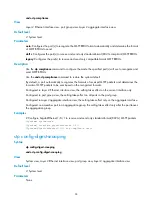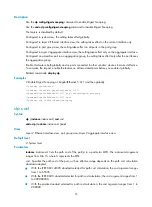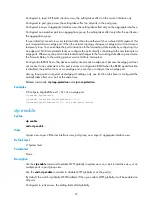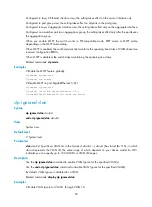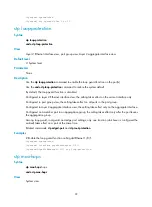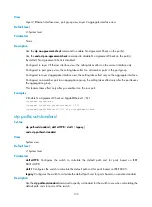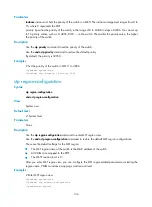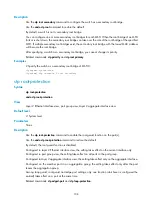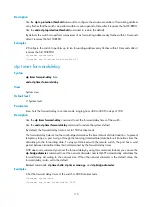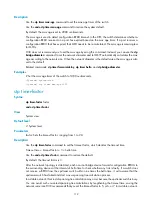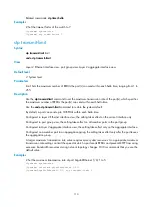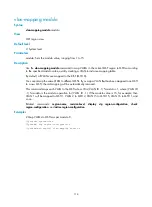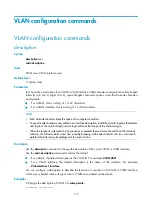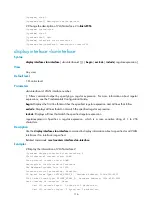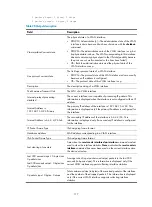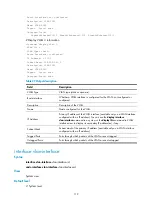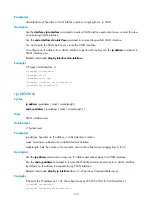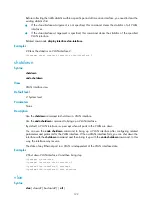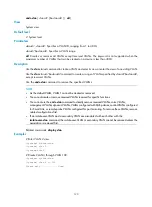
108
Description
Use the
stp root secondary
command to configure the switch as a secondary root bridge.
Use the
undo stp root
command to restore the default.
By default, a switch is not a secondary root bridge.
You can configure one or more secondary root bridges for each MSTI. When the root bridge of an MSTI
fails or is shut down, the secondary root bridge can take over the role of the root bridge of the specified
MSTI. If multiple secondary root bridges exist, the secondary root bridge with the lowest MAC address
will become the root bridge.
After specifying a switch as a secondary root bridge, you cannot change its priority.
Related commands:
stp priority
and
stp root primary
.
Examples
# Specify the switch as a secondary root bridge of MSTI 0.
<Sysname> system-view
[Sysname] stp instance 0 root secondary
stp root-protection
Syntax
stp root-protection
undo stp
root-protection
View
Layer 2 Ethernet interface view, port group view, Layer 2 aggregate interface view
Default level
2: System level
Parameters
None
Description
Use the
stp root-protection
command to enable the root guard function on the port(s).
Use the
undo stp root-protection
command to restore the default.
By default, the root guard function is disabled.
Configured in Layer 2 Ethernet interface view, the setting takes effect on the current interface only.
Configured in port group view, the setting takes effect on all ports in the port group.
Configured in Layer 2 aggregate interface view, the setting takes effect only on the aggregate interface.
Configured on the member port in an aggregation group, the setting takes effect only after the port
leaves the aggregation group.
Among loop guard, root guard and edge port settings, only one function (whichever is configured the
earliest) takes effect on a port at the same time.
Related commands:
stp edged-port
and
stp loop-protection
.

